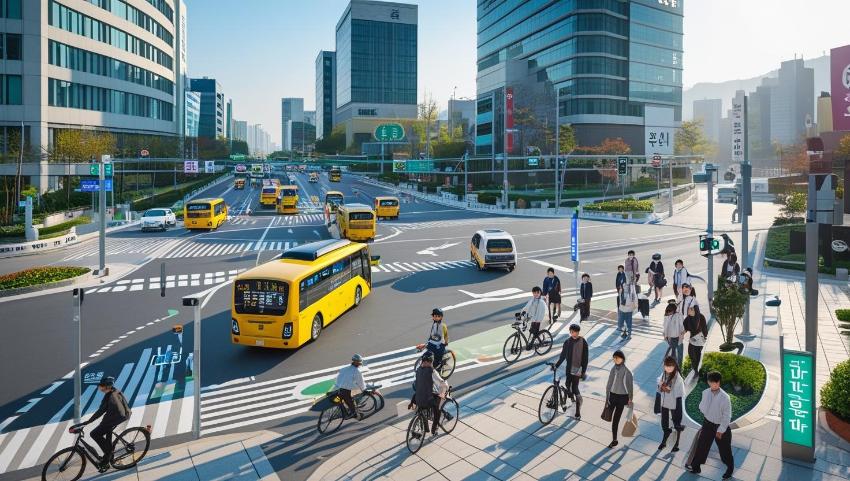
Like many other sectors, South Korea is a leader in the smart mobility industry as well. The advancements are based on the collection of addresses (Korean: 주소모음), which is a centralized system that comprehensively organizes and transforms location data, in turn revolutionizing the efficiency of the transportation networks.
Korea is setting the groundwork towards mobility solutions that are smarter, safer, and more efficient, as centralized location data systems are the backbone of transportation networks.
From Streets to Satellites
More than a digital directory, the unified address system integrates street-level data with GPS, mapping, ride-hailing, other apps, public transit systems, and even the navigational systems of self-driving cars.
Such an integration assists commuters, drivers, and delivery services to access real-time data and increases precision to avoid errors. In order to deal with the growing population in urban areas and the complex networks of roads and highways, precision in reducing errors is key; therefore, having real-time updates will assist in keeping the traffic flowing.
Enhancing Public Transportation Efficiency
Korea is recognized for its public transportation punctuality. This is further enhanced with the address system. Bus lines are capable of being dynamically adjusted based on real-time location data, and subway systems are now more capable of coordinating last-mile transport options.
Commuters are now able to enjoy optimized trip planning and reduced waiting times. From the perspective of the city planners, the integrated database provides valuable insights, which enhances their active passenger flow analysis and infrastructure investment planning.
Creating Advanced Mobility Service and Functionality
Unified address systems are essential in enabling technologies for the mobility of the future. Autonomous shuttles and drone deliveries rely on address data to provide safe and efficient services.
With a single, authoritative source of addresses, developers can worry less about data format and incomplete location info and more about innovating. This enhances the speed at which services are deployed and creates trust in users.
ALSO READ: 5 Ways Mana Rabbit Mobile Enhances the Public Transportation Experience
Integrating Rural and Urban Areas
Perhaps one of the most stunning results of Korea’s unified address collection is how it connects rural regions to urban areas. In former days, delivery of goods, transport arrangements, and even providing emergency services to some remote regions used to be nearly impossible because of inconsistent and outdated records.
These days, with the help of standardized address data, rural regions are having the same servicing standards as city residents. This enhances the rural people’s level of commerce and tourism as well as unlocking social interactions.
Preparing For The Coming Estradas
Korea’s unified address collection is a unique approach that is a treasure for other countries seeking to advance their transport systems. Investment in accurate centralized address data tends to aid in innovativeness and improves the way of life of the citizens.
Having automated transport, electric vehicles, or even a rigorous shift towards sustainable mobility backed by a solid infrastructure greatly improves the quality of life of the citizens. Korea is most definitely modernized but still receives the coveted edge.
